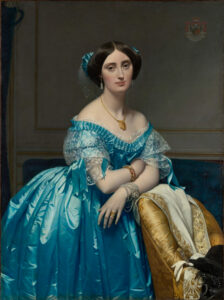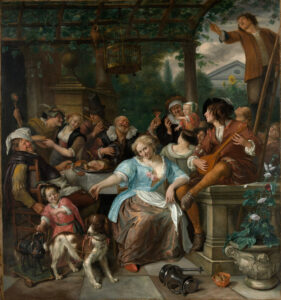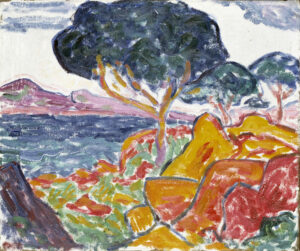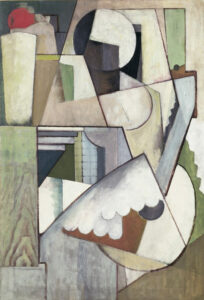
This work perfectly illustrates the art of composed romantic landscape. Painted upon Géricault’s return from his Italian sojourn (1816-1817), it is part of a series of three vast landscapes representing the Hours of the Day, this one depicting “Midday.”
Paradoxically, the artist chooses to represent this zenith hour under a dramatic sky, laden with stormy clouds that darken the rugged landscape. The composition is organized around circular architecture, directly inspired by the mausoleum of Cecilia Metella on the Via Appia, erected on a rocky spur dominating the valley. In the foreground, a couple heads toward a boat that evokes the mythological bark of Charon crossing the Styx to conduct souls to the Underworld. This mythological reference confers an allegorical dimension to the work. A macabre detail—a pillory adorned with human limbs—testifies to the morbid realism characteristic of nascent romanticism. The whole reveals the determining influence of the Italian journey on Géricault.
Further information
- Italian Landscape with Tomb, by Théodore Géricault, c. 1818
- 250 x 220 cm
- Paris Musées, Petit Palais, Fine Arts Museum of the City of Paris, displayed in Ground Floor Gallery 5
- https://www.parismuseescollections.paris.fr/fr/petit-palais/oeuvres/paysage-italien-au-tombeau
Théodore Géricault (1791-1824) remains one of the founding figures of the French romantic movement. After his failure at the prestigious Prix de Rome, he undertook on his own initiative a study trip to Italy between 1816 and 1817, a determining experience that nourished his artistic vision. This sojourn allowed him to study the old masters and assimilate the landscape tradition, which he renewed through his romantic sensibility. Upon his return, he painted these vast landscape compositions before devoting himself to his masterpiece, “The Raft of the Medusa” (1819). Géricault revolutionized history painting by infusing it with unprecedented realism and emotion, paving the way for Delacroix and subsequent romantic generations.






